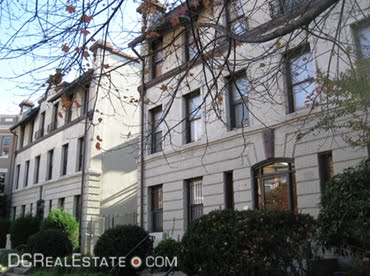 The Madison, a proposed condo development at 800 North Henry Street, will be under review Tuesday, December 4th at a public hearing held by the Alexandria Planning Commission. The project, a brainchild of Trammell Crow Companies (TCC), would add 344 condominiums, 23,000 s.f. of ground level retail and passive open space to a site slightly larger than a city block at the intersection of North Henry and Madison Streets, which falls under the jurisdiction of the upcoming Braddock Road Metro Area Plan.
The Madison, a proposed condo development at 800 North Henry Street, will be under review Tuesday, December 4th at a public hearing held by the Alexandria Planning Commission. The project, a brainchild of Trammell Crow Companies (TCC), would add 344 condominiums, 23,000 s.f. of ground level retail and passive open space to a site slightly larger than a city block at the intersection of North Henry and Madison Streets, which falls under the jurisdiction of the upcoming Braddock Road Metro Area Plan.The soon to be approved Braddock Metro Plan has hindered the Madison's actualization, as outlined by an executive summary released by the Planning Commission: "The Applicant has indicated that they have been waiting for the [Braddock Metro] plan to proceed and can no longer wait for [it] to be adopted." In the meantime, TC MidAtlantic Development III, Inc., a subsidiary of Trammell Crow, has applied for slight modifications to the initial development including: Increased building density, a reduction in the amount of required open-space and reduced parking requirements.
One of the issues that seems to be garnering the most attention is the traffic problem. A traffic study was done for the Parker-Gray area by Gorove/Slade Associates, Inc., for a project at 621 N. Payne Street, roughly three blocks away from the Madison site. The findings from that study proved that "The southbound North Henry Street corridor appeared to be over-saturated." The Planning Commission has compared traffic changes that would result from the Madison's inception against data from the Braddock plan; the official response to the traffic quandary went something like this: "The proposed project would generate fewer [AM] and [PM] trips (compared to the Braddock Plan), respectively. Within the context of the overall Braddock Plan, this is not a significant increase in traffic demand."
The site plan being reviewed next week depicts two separate buildings, a 138-unit structure on the southern portion of the site, and a 206-unit structure on the northern half. Design teams created the buildings using a variety of colors, construction materials and architectural styles to evoke the impression that the project is made up of many different buildings that were built over time, "typical of Alexandria blocks...to reduce appearance of mass and to relate to opposite block faces," according to the Planning Commission.
Developers wish to construct two courtyards totaling 20,000 s.f. of open space, 15% less than the amount required by the City of Alexandria. While details are still being worked out, it appears that TCC can compensate for this shortfall by donating to the Braddock Road Open Space Fund. An additional issue has come up regarding the original design; TCC's plan creates less parking than is mandated for a project of this magnitude - another potential topic for debate at the upcoming public hearing.
































